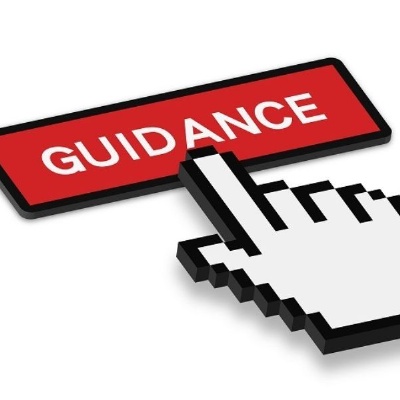Staff Guidance

DFE Guidance update-September 1st 2020
As noted in this morning’s training, the very late changes made by Government on Friday were not helpful or well timed. However, it is important that you are aware of advice as we are currently following this. I have cut/pasted edited highlights, which should be read alongside our risk assessment and the day to day guidance provided by Pierre.
AS ALWAYS, IF YOU HAVE QUESITONS, THEN PLEASE ASK!
Isolation procedures related to a suspected or known case of Covid:
Minimise contact with individuals who are unwell by ensuring that those who have coronavirus (COVID-19) symptoms, or who have someone in their household who does, do not attend school
Ensuring that pupils, staff and other adults do not come into the school if they have coronavirus
(COVID-19) symptoms (https://www.gov.uk/guidance/nhs-test-and-trace-how-it-works#people-who-develop symptoms-of-coronavirus) or have tested positive in at least the last 10 days and ensuring anyone developing those symptoms during the school day is sent home, are essential actions to reduce the risk in schools and further drive down transmission of coronavirus (COVID-19).
All schools must follow this process and ensure all staff are aware of it.
If anyone in the school becomes unwell with a new and persistent cough or a high temperature, or has a loss of or change in, their normal sense of taste or smell (anosmia), they must be sent home and advised to follow guidance for households with possible or confirmed coronavirus (COVID-19) infection (https://www.gov.uk/government/publications/covid-19-stay-at-home-guidance), which sets out that they should self-isolate for at least 10 days and should arrange to have a test
(https://www.gov.uk/guidance/coronavirus-covid-19-getting-tested) to see if they have coronavirus (COVID19).
If they have tested positive whilst not experiencing symptoms but develop symptoms during the isolation period, they should restart the 10-day isolation period from the day they develop symptoms.
Other members of their household (including any siblings) should self-isolate for 14 days from when the symptomatic person first had symptoms.
If a child is awaiting collection, they should be moved, if possible, to a room where they can be isolated behind a closed door, depending on the age and needs of the child, with appropriate adult supervision if required. Ideally, a window should be opened for ventilation. If it is not possible to isolate them, move them to an area which is at least 2 metres away from other people.
(This is the space in Cub, as shared with you today and highlighted in the risk assessment)
If they need to go to the bathroom while waiting to be collected, they should use a separate bathroom if possible. The bathroom must be cleaned and disinfected using standard cleaning products before being used by anyone else. (The toilet in Cub is the designated toilet for this situation. Both areas, once pupils has gone would be cleaned/closed off until cleaned)
PPE must be worn by staff caring for the child while they await collection if a distance of 2 metres cannot be maintained (such as for a very young child or a child with complex needs). More information on PPE use can be found in the safe working in education, childcare and children’s social care settings, including the use of personal protective equipment (PPE)
Summary:
If you have Covid, you must isolate for 10 days
If someone in your household (direct household only) has Covid you have to isolate for 14 days.
Face Coverings
The government is not recommending universal use of face coverings in all schools. Schools that teach children in years 7 and above and which are not under specific local restriction measures will have the discretion to require face coverings for pupils, staff and visitors in areas outside the classroom where social distancing cannot easily be maintained, such as corridors and communal areas and it has been deemed appropriate in those circumstances. Primary school children will not need to wear a face covering.
In particular, schools that teach years 7 and above may decide to recommend the wearing of face coverings for pupils, staff or visitors in communal areas outside the classroom where the layout of the schools makes it difficult to maintain social distancing when staff and pupils are moving around the premises, for example, corridors.
In primary schools where social distancing is not possible in areas outside of classrooms between members of staff or visitors, for example in staffrooms, headteachers will have the discretion to decide whether to ask staff or visitors to wear, or agree to them wearing face coverings in these circumstances.
Based on current evidence and the measures that schools are already putting in place, such as the system of controls and consistent bubbles, face coverings will not be necessary in the classroom even where social distancing is not possible. Face coverings would have a negative impact on teaching and their use in the classroom should be avoided.
Where local restrictions apply
In areas where local lockdowns or restrictions are in place, face coverings should be worn by adults and pupils (in years 7 and above) in areas outside classrooms when moving around communal areas where social distancing is difficult to maintain such as corridors.
In the event of new local restrictions being imposed, schools will need to communicate quickly and clearly to staff, parents, pupils that the new arrangements require the use of face coverings in certain circumstances.
Exemptions:
Some individuals are exempt from wearing face coverings. This applies to those who:
- Cannot put on, wear or remove a face covering because of a physical or mental illness or impairment or disability
- Speak to or provide assistance to someone who relies on lip reading, clear sound or facial expression to communicate.
- The same exemptions will apply in education settings, and we would expect teachers and other staff to be sensitive to those needs.
Access to face coverings
It is reasonable to assume that staff and young people will now have access to face coverings due to their increasing use in wider society, and Public Health England has made available resources on how to make a simple face covering.
However, where anybody is struggling to access a face covering, or where they are unable to use their face covering due to having forgotten it or it having become soiled or unsafe, education settings should take steps to have a small contingency supply available to meet such needs.
No-one should be excluded from education on the grounds that they are not wearing a face covering.
Summary:
Advice is currently that secondary pupils/staff use coverings when moving around the building but this is not compulsory unless in a local/national lock down scenario
However, advice on this topic is changing like the leadership at Ofqual! This is a clear area that we need to decide what is best for us and our community, as time goes by.
Social distance
Minimise contact between individuals and maintain social distancing wherever possible Minimising contacts and mixing between people reduces transmission of coronavirus (COVID-19). This is important in all contexts and schools must consider how to implement this. Schools must do everything possible to minimise contacts and mixing while delivering a broad and balanced curriculum.
The overarching principle to apply is reducing the number of contacts between children and staff. This can be achieved through keeping groups separate (in ‘bubbles’) and through maintaining the distance between individuals. These are not alternative options and both measures will help, but the balance between them will change depending on:
Children’s ability to distance the lay out of the school
The feasibility of keeping distinct groups separate while offering a broad curriculum (especially at secondary)
It is likely that for younger children the emphasis will be on separating groups and for older children, it will be on distancing. For children old enough, they should also be supported to maintain distance and not touch staff where possible.
Maintaining a distance between people whilst inside and reducing the amount of time they are in face to face contact lowers the risk of transmission. It is strong public health advice that staff in secondary schools maintain distance from their pupils, staying at the front of the class, and away from their colleagues where possible. Ideally, adults should maintain 2 metre distance from each other, and from children. We know that this is not always possible, particularly when working with younger children, but if adults can do this when circumstances allow that will help.
Summary:
We are maintaining classroom groups where we can and reducing movement. However, we do not control transport and this will add a further layer of complication. Pupils should all be wearing face coverings whilst travelling in a taxi.
Classrooms have been remodelled and you have been asked to work at the front. You can support by quickly moving in/out to a pupil and being alongside then but not face to face with them. As a classroom team you will need to help each other with development of good practice here.
We are still encouraging social distance between adults and children wherever possible
Getting tested!
If you or a pupil, or a member of your family develops symptoms then you must get tested ASAP. This can be done by:
- Book a test (https://www.gov.uk/guidance/coronavirus-covid-19-getting-tested)
- Telephone via NHS 119 for those without access to the internet. Essential workers, which includes anyone involved in education or childcare, have priority access to testing.
If someone tests negative, if they feel well and no longer have symptoms similar to coronavirus (COVID-19), they can stop self-isolating. They could still have another virus, such as a cold or flu – in which case it is still best to avoid contact with other people until they are better. Other members of their household can stop self-isolating.
If someone tests positive, they should follow the guidance for households with possible or confirmed coronavirus (COVID-19) infection (https://www.gov.uk/government/publications/covid19-stay-at-home-guidance) and must continue to self-isolate for at least 10 days from the onset of their symptoms and then return to school only if they do not have symptoms other than cough or loss of sense of smell/taste. This is because a cough or anosmia can last for several weeks once the infection has gone. The 10-day period starts from the day when they first became ill. If they still have a high temperature, they should keep self-isolating until their temperature returns to normal. Other members of their household should continue self-isolating for the full 14 days.
Summary:
If you feel ill, with what may be symptoms then get tested and do not come to work until you have been tested and know the result. Many of us have always come into school, whilst feeling under the weather. We can no longer continue to do this without getting tested.
The same applies to pupils and this may cause some increased tension with some parents. However, our processes must be followed to help avoid a large outbreak within the school and our communities.
Management of an outbreak
If you have Covid you must isolate for 10 days
If a family member of someone who has had close contact for a period of time is tested positive then you will need to isolate for 14 days.
The DFE define close contact as:
- Direct close contacts - face to face contact with an infected individual for any length of time, within 1 metre, including being coughed on, a face to face conversation, or unprotected physical contact (skin-to-skin)
- Proximity contacts - extended close contact (within 1 to 2 metres for more than 15 minutes) with an infected individual
- Travelling in a small vehicle, like a car, with an infected person
Household members of those contacts who are sent home do not need to self-isolate themselves unless the child, young person or staff member who is self-isolating subsequently develops symptoms. If someone in a class or group that has been asked to self-isolate develops symptoms themselves within their 14-day isolation period they should follow guidance for households with possible or confirmed coronavirus (COVID-19) infection
(https://www.gov.uk/government/publications/covid-19-stay-at-home-guidance). They should get a test, and:
- If the test delivers a negative result, they must remain in isolation for the remainder of the 14-day isolation period. This is because they could still develop the coronavirus (COVID-19) within the remaining days.
- If the test result is positive, they should inform their setting immediately, and should isolate for at least 10 days from the onset of their symptoms (which could mean the self-isolation ends before or after the original 14-day isolation period). Their household should self-isolate for at least 14 days from when the symptomatic person first had symptoms, following guidance for households with possible or confirmed coronavirus (COVID-19) infection
Schools should not request evidence of negative test results or other medical evidence before admitting children or welcoming them back after a period of self-isolation.
If schools have two or more confirmed cases within 14 days, or an overall rise in sickness absence where coronavirus (COVID-19) is suspected, they may have an outbreak and must continue to work with their local health protection team who will be able to advise if additional action is required.
In some cases, health protection teams may recommend that a larger number of other pupils self isolate at home as a precautionary measure – perhaps the whole site or year group. If schools are implementing controls from this list, addressing the risks they have identified and therefore reducing transmission risks, whole school closure based on cases within the school will not generally be necessary, and should not be considered except on the advice of health protection teams.
In consultation with the local Director of Public Health, where an outbreak in a school is confirmed, a mobile testing unit may be dispatched to test others who may have been in contact with the person who has tested positive. Testing will first focus on the person’s class, followed by their year group, then the whole school if necessary, in line with routine public health outbreak control practice.
Summary:
We are likely to see an increased number of staff who will have to access testing at different times, for us to be sure they do not have Covid
Pupils have access to this but we now that many will struggle with the process/ external staff and the intrusive nature of the test.
It is highly likely to cause issues with attendance and being able to operate normally, if we see an increase in infection rate, as I suspect we will.
Transport
From the autumn term, local authorities will not be required to uniformly apply the social distancing guidelines for public transport, on dedicated school or college transport. However, distancing should still be put in place within vehicles wherever possible. This will help to both minimise disease transmission risks and maintain consistent reinforcement of public health messaging to children and staff, particularly at the point where they are leaving school and heading back into the community each day.
The approach to dedicated transport should align wherever possible with the principles underpinning the system of controls set out in this document and with the approach being adopted for your school. It is important, wherever it is possible, that:
Social distancing should be maximised within vehicles
Children either sit with their ‘bubble’ on school transport, or with the same constant group of children each day
Children should clean their hands before boarding transport and again on disembarking additional cleaning of vehicles is put in place organised queueing and boarding is put in place
Through ventilation of fresh air (from outside the vehicle) is maximised, particularly through opening windows and ceiling vents
Summary:
Taxi providers have been great so far, but with lower numbers. This could be a huge headache for all concerned and we will monitor this closely.







